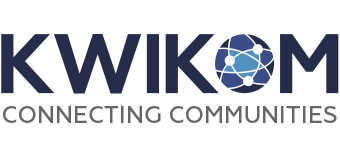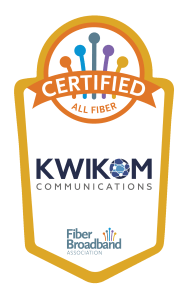The Cost-Benefit Analysis of Upgrading to Fiber for Small Businesses
In the competitive landscape of today’s business world, small businesses must make strategic decisions to stay ahead. One critical decision is whether to upgrade to fiber internet. While the initial costs of making the switch may seem daunting, the long-term benefits often outweigh the expense, making it a worthwhile investment for many small businesses. This blog will conduct a detailed cost-benefit analysis of upgrading to fiber internet, using real-world data to demonstrate the financial and operational advantages.
Before diving into the benefits, it’s important to understand the costs associated with upgrading to fiber internet. These costs can vary depending on several factors, including location, the existing infrastructure, and the specific needs of the business.
Installation Costs:
The initial installation cost for fiber internet can range, depending on several factors. However, the most important factor is the proximity of a business’s building to the nearest fiber line. In a market where KWIKOM fiber has already been installed throughout the city, a standard installation fee is roughly $95. However, if a building is located further away from the main fiber lines, then specialized construction may need to be done to get fiber to the building. This can make the installation fee spike to thousands of dollars, depending on the amount of extensive construction that is needed.
Monthly Service Fees:
Once installed, the monthly service fees for fiber internet are typically higher than those for traditional cable or DSL internet. With KWIKOM, your business can expect to pay between $85 per month and $225 per month, depending on the speed and service-level that you choose. However, a major benefit of signing up with KWIKOM is our price lock guarantee, meaning your service price will never change within the timeframe of your contract.
Equipment Costs:
While other providers may charge you monthly equipment fees, KWIKOM does not. We only charge for installation.
However, other providers may charge you monthly for the use of routers and modems capable of handling higher speeds. These costs can range, depending on the brand and specifications.
Analyzing the Benefits of Fiber Internet
While the upfront and ongoing costs of fiber internet can be significant, the benefits it offers in terms of speed, reliability, and overall business efficiency often make it a worthwhile investment. Let’s examine these benefits in detail.
Increased Productivity:
The average human types at 40 words per minute, speaks 125 words per minute, and thinks at 400 words per minute, meaning that a full-time employee is losing 90% of productivity as they are putting their thoughts to the keyboard. According to a study by Sandisk, slow internet connections cost small businesses up to one week of productivity per employee per year. This adds another 2% of inactivity and means that businesses are paying for 8% of each full-time employee’s full capabilities.
Granted, humans will never be able to type as fast as they can think, but businesses can get that 2% of inactivity back by providing their employees with fast, reliable internet that supports the digital tools they use every day. Just to put that 2% in perspective, let’s use an example.
If an employee making $60,000 per year is unproductive 10% of the time, that’s $6,000 of wasted resources per year. But with fiber internet, a company gains 2% of that time back, meaning they now only have $4,800 of money spent on employee inactivity. So, with faster and more reliable internet speeds, companies gain $1,200 back on employee productivity per employee per year.
By upgrading to fiber, businesses can significantly reduce this lost time, leading to more efficient operations and higher revenue potential.
Cost Savings from Enhanced Reliability:
Fiber internet is known for its reliability, with far fewer outages compared to traditional broadband services. The increased reliability reduces the risk of downtime, which can be costly for small businesses. According to a report by CSpire, an internet outage can cost anywhere between $427 per minute for small businesses, and for a large corporation the losses can be as high as $9,000 per minute. By minimizing outages, fiber internet can save a small business thousands of dollars annually.
Scalability and Future-Proofing:
As businesses grow, their internet needs often increase. Fiber internet offers scalability, allowing businesses to upgrade their speeds as needed without the need for significant infrastructure changes. This future-proofing means that small businesses can continue to rely on their fiber connection as they expand, avoiding the costs associated with frequent upgrades to alternative internet services.
Improved Customer Experience:
For businesses that rely on customer-facing applications, such as e-commerce sites or online support platforms, a fast and reliable internet connection is crucial. Fiber internet ensures that customers have a seamless experience, leading to higher satisfaction and retention rates. Anything less can result in customer frustration and lost revenue.
In fact, 47% of consumers will only wait 2 seconds for a web page to load before leaving the site. Longer loading times will likely cause consumers to research other companies and purchase their wares instead of yours. Additionally, slow speeds also affect where your business appears in search results. Google particularly uses speed as part of its algorithm to rank pages. Meaning, if your business’s website is slow, it will be lower in the search results and ultimately lead to less web traffic.
There is data available that shows even a one-second website delay can be quite costly for a business. Quick Sprout reports that a one-second delay can lead to a 7% loss in conversions. As an example, if a business makes $100,000 per day, a one-second delay could potentially cost $2.5 million in lost sales every year.
Website performance also has a major impact on customer retention. Repeat customers are how most businesses survive, but the first impression is the most vital step in turning a one-time customer into a repeated buyer. This is emphasized with a statistic from Medium: “79% of shoppers who are a dissatisfied with website performance are less likely to buy from same site again.”
And if you thought your business was safe because you’ve built a good reputation with your customers, think again. According to a report by PwC, 32% of customers would stop doing business with a brand they love after just one bad experience.
These statistics and reports prove how vital it is for a business to provide a smooth online experience for their customers. Fiber internet can help small businesses avoid slow loading times and customer churn as a result of those slow experiences while also maintaining their revenue streams and reputations.
Enhanced Security:
Cybersecurity is a growing concern for businesses of all sizes. Fiber internet offers enhanced security features, including better encryption and lower susceptibility to interference, which can protect a business’s data from cyber threats. According to IBM’s 2024 Cost of a Data Breach Report, the global average cost of a data breach is $4.88 million. While fiber internet cannot prevent all cyberattacks, its enhanced security features can reduce the likelihood of breaches, potentially saving small businesses millions of dollars in damages.
Calculating the Return on Investment (ROI)
When considering the upgrade to fiber internet, small businesses should evaluate the potential return on investment (ROI). This calculation takes into account the initial costs, ongoing expenses, and the financial benefits derived from increased productivity, reduced downtime, and other factors.
Example ROI Calculation:
Let’s consider a small business with 10 employees that currently pays $100 per month for traditional broadband. The business has decided to upgrade to KWIKOM fiber internet with an installation cost of $95 and a monthly fee of $155 for our 1 Gbps service. In this example, the productivity gains are configured based on the assumption that each employee is saving 5 hours of productivity per month.
Initial Costs:
- Installation: $95
- Total Initial Costs: $95
Annual Operating Costs:
- KWIKOM Fiber Monthly Fee: $155 per month
- Traditional Broadband Monthly Fee: $100 per month
- Increase in Monthly Cost: $155 – $100 = $55
- Annual Operating Costs: $55 per month x 12 months = $660
Productivity Gains:
- Productivity Gain Per Month: 10 employees x 5 hours x $25 = $1,250 per month
- Annual Productivity Gain: $1,250 x 12 months = $15,000
Downtime Savings:
- Annual Downtime Savings: 5 hours per year x $1,000 per hour = $5,000
Total Benefits:
- First-Year Benefits: $15,000 (productivity) + $5,000 (downtime savings) = $20,000
Net ROI in Year 1:
- Net ROI in Year 1: $20,000 (benefits) – $95 (initial costs) – $660 (operating costs) = $19,245
ROI Percentage in Year 1:
- ROI Percentage: $19,245 / ($95 + $660) = 2,705%
This example shows an increase of 2,705% ROI in the first year alone, with even greater benefits in subsequent years as the initial installation costs are no longer a factor. This demonstrates how, despite the upfront costs, upgrading to fiber internet can provide a significant financial return for small businesses.
Conclusion: A Strategic Investment for Small Businesses
The decision to upgrade to fiber internet is not one to be taken lightly, especially for small businesses operating on tight budgets. However, as this cost-benefit analysis has shown, the long-term advantages of fiber—ranging from increased productivity and reliability to enhanced customer satisfaction and retention—often far outweigh the initial investment. For small businesses looking to stay competitive in the digital age, upgrading to fiber internet is a strategic investment that can yield substantial financial and operational benefits.
At KWIKOM, we are committed to helping small businesses thrive by providing cutting-edge fiber internet solutions tailored to their needs. Contact us today to learn more about how our fiber services can help your business achieve its full potential.








